Sidusglacies - ⚡️

More Posts from Sidusglacies and Others

新幹線と富士山 (via かがみ~)

This post has been brought to you by the National Aeronautics and Space Administration.

What drives auroras on Saturn? To help find out, scientists have sorted through hundreds of infrared images of Saturn taken by the Cassini spacecraft for other purposes, trying to find enough aurora images to correlate changes and make movies. Once made, some movies clearly show that Saturnian auroras can change not only with the angle of the Sun, but also as the planet rotates. Furthermore, some auroral changes appear related to waves in Saturn's magnetosphere likely caused by Saturn's moons. Pictured here, a false-colored image taken in 2007 shows Saturn in three bands of infrared light. The rings reflect relatively blue sunlight, while the planet itself glows in comparatively low energy red. A band of southern aurora in visible in green. In has recently been found that auroras heat Saturn's upper atmosphere. Understanding Saturn's auroras is a path toward a better understanding of Earth's auroras.
Image Credit: NASA, Cassini, VIMS Team, U. Arizona, U. Leicester, JPL, ASI
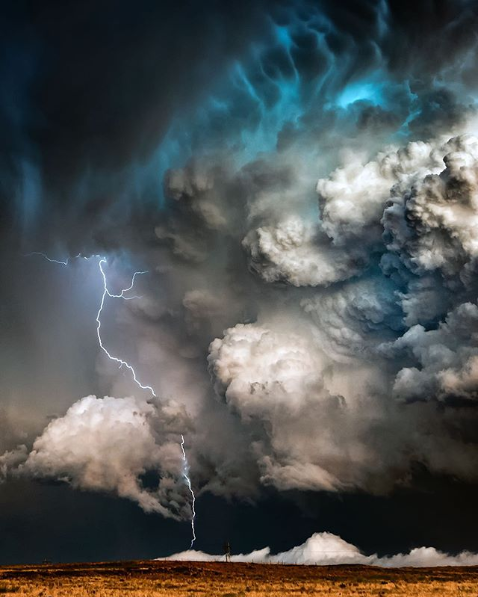
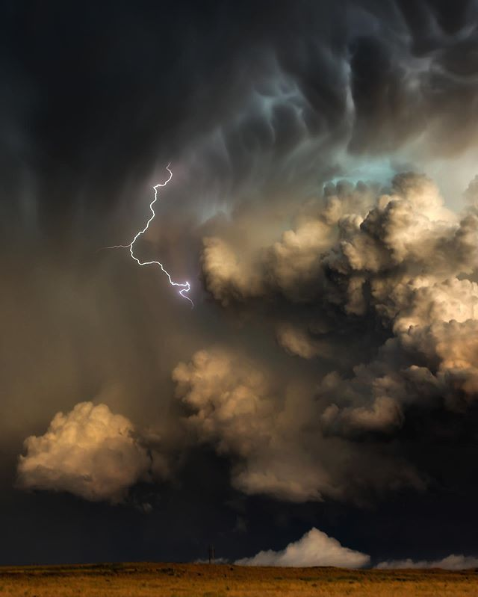
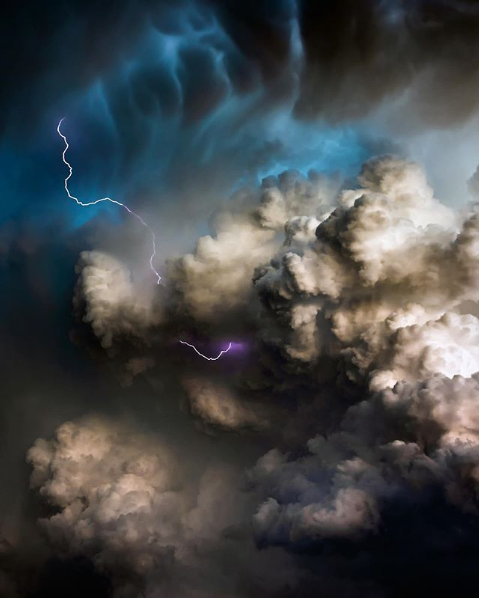
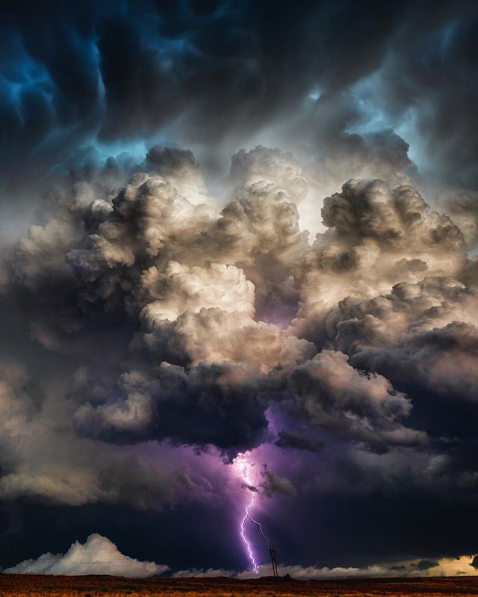
photography by Adam Kyle Jackson powerful nature

Umbriel as seen by Voyager 2 in 1986. At the top is the large crater Wunda, whose walls enclose a ring of bright material.
Credit: NASA



Gökyüzüne sevgim hiç bitmeyecek belli ki ... 😌
Polar Vortex Disruption Of January 2013
Satellite imagery of the disruption of the polar vortex in the northern hemisphere winter 2012-2013. The data show a major stratospheric sudden warming (SSW) event, linked to the distortion and reversal of the normal westerly (moving west to east) flow of air.
The large vortex (bright) over the North Atlantic Ocean at the start of the clip breaks up into several smaller vortices. This is due to air from lower latitudes (dark) becoming entrained in the polar flow, forming an anti-cyclonic region (dark, rotating clockwise) over Japan and eastern Russia, which disrupts the flow across the region.
Learn More About The Polar Vortex
Although dramatic, such events are not rare, occurring every two years on average. They can cause winds to reverse near the surface too, leading to very cold spells, especially in North America and Europe.
The brightness indicates the potential vorticity of the air, a measure of its rotation within its flow, at an altitude of 35 kilometers. Brighter regions have more vorticity.
A major SSW occurs when the temperatures in the stratosphere around the pole increases by at least 25 Kelvin within a week, causing the wind to change direction.
The data were gathered by the GEOS-5 satellite every hour between 15th December 2012 and 28th January 2013.
© GMAO / GSFC / NASA / Science Source
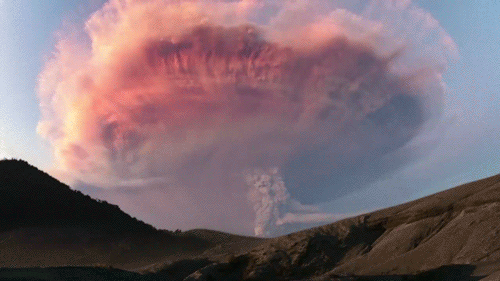
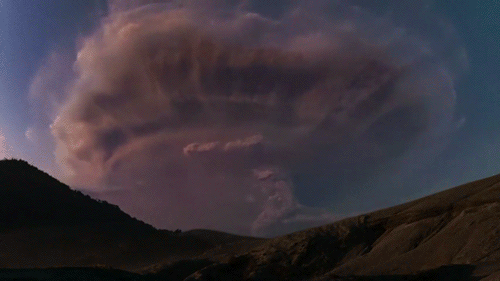
Lightning inside a volcanic ash cloud in Patagonia.
tomorrow's schedule
7:30 am-8 am: wake up
8-8:30 am: drink a bowl of water with a spoon like soup
8:30 am - 4:00 pm: bring bronze age petroglyphs to life with my powers
4:00 pm-: haven't figured out this part yet

So much of fluid dynamics comes down to finding the right way to observe a flow. (Image credit: Expedition 59 Crew; via NASA Earth Observatory)
-
 followmebelowlinkshere liked this · 1 month ago
followmebelowlinkshere liked this · 1 month ago -
 tchotchk-e liked this · 1 month ago
tchotchk-e liked this · 1 month ago -
 slowlyintothedarkness liked this · 2 months ago
slowlyintothedarkness liked this · 2 months ago -
 queen-of-hobgobblers liked this · 2 months ago
queen-of-hobgobblers liked this · 2 months ago -
 slowlyintothedarkness reblogged this · 3 months ago
slowlyintothedarkness reblogged this · 3 months ago -
 lebisbian liked this · 6 months ago
lebisbian liked this · 6 months ago -
 suburbanchildhood reblogged this · 6 months ago
suburbanchildhood reblogged this · 6 months ago -
 shkiia reblogged this · 7 months ago
shkiia reblogged this · 7 months ago -
 pasteleriasilvestre reblogged this · 7 months ago
pasteleriasilvestre reblogged this · 7 months ago -
 hicobeli liked this · 7 months ago
hicobeli liked this · 7 months ago -
 fearevil liked this · 7 months ago
fearevil liked this · 7 months ago -
 busful reblogged this · 7 months ago
busful reblogged this · 7 months ago -
 pasteleriasilvestre reblogged this · 7 months ago
pasteleriasilvestre reblogged this · 7 months ago -
 deadgeisha reblogged this · 1 year ago
deadgeisha reblogged this · 1 year ago -
 scorpiotribe reblogged this · 1 year ago
scorpiotribe reblogged this · 1 year ago -
 crowcoyote reblogged this · 1 year ago
crowcoyote reblogged this · 1 year ago -
 peoplepuncher reblogged this · 1 year ago
peoplepuncher reblogged this · 1 year ago -
 666bedbugs liked this · 1 year ago
666bedbugs liked this · 1 year ago -
 teafrompragueandfactories reblogged this · 1 year ago
teafrompragueandfactories reblogged this · 1 year ago -
 teafrompragueandfactories liked this · 1 year ago
teafrompragueandfactories liked this · 1 year ago -
 murmher liked this · 1 year ago
murmher liked this · 1 year ago -
 angelnumber27 reblogged this · 1 year ago
angelnumber27 reblogged this · 1 year ago -
 brokensheath liked this · 1 year ago
brokensheath liked this · 1 year ago -
 urmumslover liked this · 1 year ago
urmumslover liked this · 1 year ago -
 quartzmilk liked this · 1 year ago
quartzmilk liked this · 1 year ago -
 sanctimorias reblogged this · 1 year ago
sanctimorias reblogged this · 1 year ago -
 emiliepender reblogged this · 1 year ago
emiliepender reblogged this · 1 year ago -
 stellaportabella reblogged this · 1 year ago
stellaportabella reblogged this · 1 year ago -
 midnight-space reblogged this · 1 year ago
midnight-space reblogged this · 1 year ago -
 the-ghost-inthe-background reblogged this · 1 year ago
the-ghost-inthe-background reblogged this · 1 year ago -
 ourhauntedgrounds reblogged this · 1 year ago
ourhauntedgrounds reblogged this · 1 year ago -
 my-t4t-romance liked this · 1 year ago
my-t4t-romance liked this · 1 year ago -
 ourhauntedgrounds liked this · 1 year ago
ourhauntedgrounds liked this · 1 year ago -
 kashmerekitten reblogged this · 1 year ago
kashmerekitten reblogged this · 1 year ago -
 planeteuphrates reblogged this · 1 year ago
planeteuphrates reblogged this · 1 year ago -
 auspiciouslesbian reblogged this · 2 years ago
auspiciouslesbian reblogged this · 2 years ago -
 too-good liked this · 2 years ago
too-good liked this · 2 years ago -
 mikec169 liked this · 2 years ago
mikec169 liked this · 2 years ago -
 brain---soup reblogged this · 2 years ago
brain---soup reblogged this · 2 years ago -
 hulovesit liked this · 2 years ago
hulovesit liked this · 2 years ago -
 tu-ped liked this · 2 years ago
tu-ped liked this · 2 years ago -
 boredouji liked this · 2 years ago
boredouji liked this · 2 years ago
